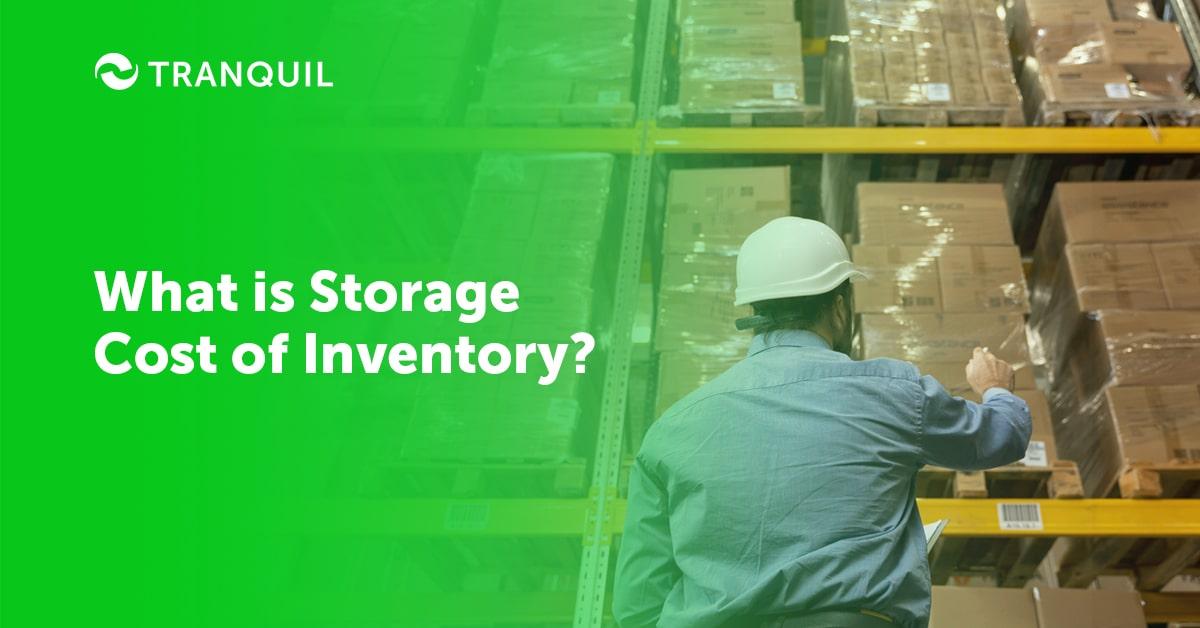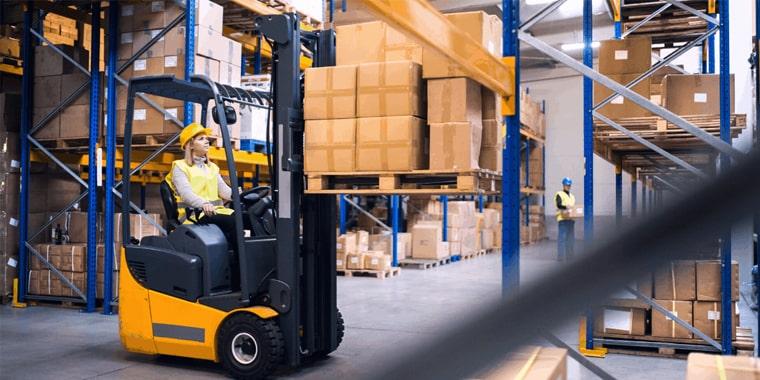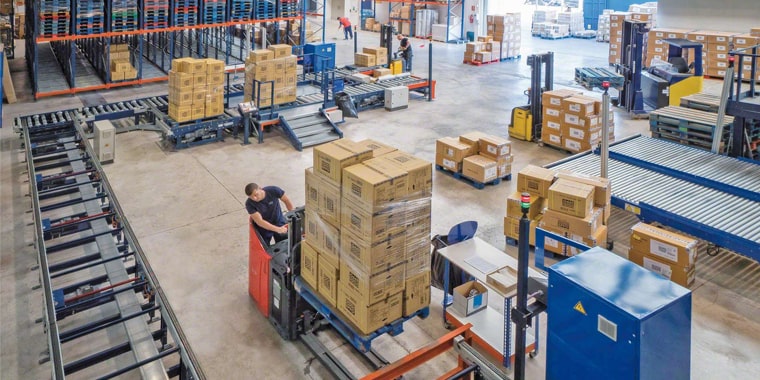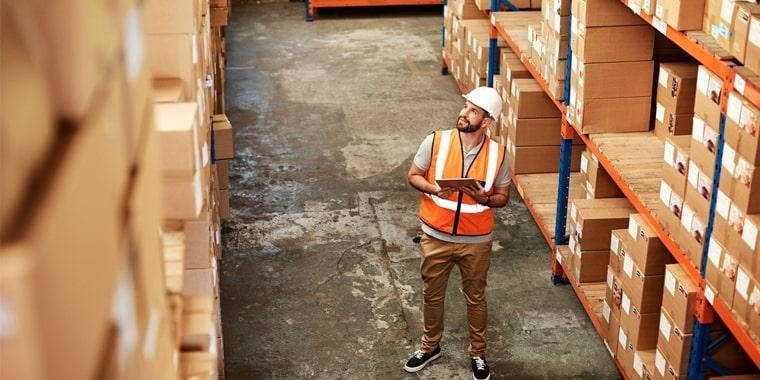
Inventory is one of the most critical assets of a business, and it needs to be managed efficiently.
Sufficient inventory is required on hand to meet production needs and fulfil customer orders.
Too little, and you may need to pause production or delay shipping; too much, and you run the risk of high storage cost of inventory as well as other potential risks like spoilage, theft, and so on.
All these factors need to be thoroughly thought about before deciding the quantity to store.
Before delving into what constitutes inventory storage costs, let us first understand why a company stores inventory.
Striking the perfect balance between reducing expenses and carrying sufficient stock is easier said than done.
Most businesses fear that with inadequate stocks, they may miss out on sales and annoy customers.
ALSO READ: What is Landed Cost and How to Calculate It?
Here are the most common reasons that businesses hold inventory:
Having just enough stock to fulfil the projected demand can be risky in the event of sudden demand spikes.
This encourages companies to keep some safety stock in hand, especially for popular items.
Most retailers and some manufacturers have seasonal demand, earning most of their revenue in a few months of the year.
Air conditioners will sell more in the summer, while jackets and woollens will see a spike in demand close to winter.
To meet these seasonal demands, companies often stock up on inventory just before the start of the busy season.
After forecasting sales, businesses often buy cycle inventory, which is simply inventory needed to meet the projected demand for different products.
Unlike safety stock, it is not purchased as a buffer to cover the unexpected but to cover the expected and forecasted sales.
ALSO READ: What is Zero Inventory?
This is stock bought by the company but not received at their warehouse yet.
Depending on the distance between the vendor and the company, the lead time can be a few months too, meaning that inventory could take a long time in transit.
But this stock needs to be accounted while they plan purchases for the near future.
Else, they may end up ordering too much.
Stock that can’t be sold is usually a write-off but continues to languish in some warehouses.
Unfortunately, it increases carrying costs without the management realizing it.
The storage cost of inventory can be so prohibitive that your inventory can become a liability for you – in spite of it being the most essential thing for a business.
Some experts stress on the need for minimal inventory to keep the inventory cost as low as possible.
Let us understand all about inventory carrying costs first.
ALSO READ: What is Dead Stock – How Can You Avoid It?

This is an important KPI that allows you to establish if your operations are efficient or not.
If your carrying costs are very high, it could indicate that your business has excess inventory than what it needs.
You will need to rethink the quantities or the frequency of orders so that you don’t hold stock for too long.
There are four main categories of inventory holding costs – capital, service, risk, and storage expenses.
Risk includes theft, shrinkage, spoilage, obsolescence, and depreciation.
Capital costs refer to the amount you spend on purchasing inventory, interests, fees, etc; storage cost is lease, mortgage or rent for warehouses, utilities, labour, admin expenses.
Service costs refer to software, taxes, insurance, and so on.
We will now take a detailed look at what constitutes storage cost of inventory.
ALSO READ: Common Inventory Management Mistakes to Avoid

This expense is more or less fixed, and refers to the cost of the warehousing facility, depreciation on it and storage racks, insurance, wages of staff, electricity and other utility bills, etc.
It can be assigned only to the inventory that is inside the warehouse, and not to the individual inventory units.
Labour expenditure is a huge component of the amount spent on handling materials; labour is required for unloading, unpacking, storing in racks, labelling, picking, packing, loading, and so on.
Employee cost can be reduced by arranging the warehouses and storage of inventory items in such a way as to increase the productivity of employees and reduce the time they spend walking all over the warehouse to pick or put away items.
One way is to store the highest selling items closer to the packing station, or introducing some automation to supplement your human employees.
You can also try out different methods of picking, and implement software to map the best picking paths for your workers.
This will help increase efficiency and picking, and make it faster, as well as reduce your labour costs.
Material handling also includes the machinery and equipment used for handling the stock like forklifts, cranes, bins, and the like.
By storing fewer items in warehouses, a business can reduce its material handling cost considerably.
ALSO READ: What is Cross Docking?
Some perishable items are liable to shrinkage in storage; this can be due to natural causes like evaporation, theft, transit damage, fraud, errors in records, and so on.
The higher the inventory that you hold, the more you are likely to lose to shrinkage.
To lower this cost, you could install CCTVs to find out if employees are stealing and dismiss them, ask vendors to be more careful with packing, and carry out physical counting.
ALSO READ: Why is Cycle Stock Important for Your Business?
If a business borrows money to purchase stock, they are liable to pay interest on it.
This cost can be directly assigned to the inventory it is used to purchase.
Also, even a single unit of that inventory can free up funds to repay the debt as it gets sold.
This is a variable cost as the market interest rate often fluctuates.
However, tying up too much money in inventory can hamper your cash flow and probably even make it more urgent and expensive to raise more capital.
By investing smartly in forecasting software, you can purchase the right amount of inventory and probably bargain for more favourable prices and payment terms with vendors.
ALSO READ: How Can you Track UOM?
Most organizations purchase insurance policies to protect their inventory as it is subject to several risks as we saw above.
Once insured, even a devastating flood or fire will not cause you great loss; however, you must remember that your insurance premiums are linked to the quantity of inventory you store in the warehouse.
Therefore, the more the inventory, the higher your premiums.
The same goes for your taxes as well.
By storing a lesser quantity of inventory, you can reduce both your insurance premiums as well as taxes.
You could also plan things such that you sell the inventory you hold prior to the date when your inventory has to be checked to calculate your tax liability.
Several heads of expenditure can be categorized as administrative costs.
These include but are not limited to:
Companies with large warehouses and more inventory are likely to have higher admin costs.
ALSO READ: What is Backordering?
Risk mitigation expenses include the cost of insurance, installing CCTVs, employing security guards, sprinkler systems, alarms, waterproofing, and other measures taken to protect the inventory.
This is also mostly a fixed cost, similar to the facility expenses, and relates to the inventory value.
Certain types of inventories become unsaleable over time due to several reasons: they could be perishable as in the case of produce or food products, go out of fashion like clothing and footwear, or be made obsolete by newer, advanced models, as in the case of appliances and electronics.
This is generally an incremental expense and is usually linked to goods with low turnover, and to the inventory value.
It could happen that a business is almost all the time concentrating on moving out the additional inventory it has.
This leaves very little time for the company to innovate and come out with new and more efficient product offerings for their customers. This can create a pretty negative image about the company in the minds of the customers.
As you can see, most of the inventory holding costs are of a fixed nature.
Therefore, a company with an empty or near-empty warehouse will have very little incremental expense if they have a couple of extra inventory units.
A business that has a full warehouse, however, is likely to have to deal with heavy expenses to store the excess inventory units.
The only way that this fixed expense can be reduced by a business is to ensure that they do not store huge quantities of inventory in their warehouses for long periods of time.
ALSO READ: What is Batch Tracking?

We have already seen that regularly measuring inventory storage costs can help you determine if you’re spending too much on storage and whether you need to change your production and purchase schedules.
To get the inventory storage cost, you first have to add all the expenses discussed above, for a whole year.
Next, you divide that cost by the total value of the inventory.
To get this as a percentage, you multiply the answer by 100.
Inventory storage cost = total storage cost / total value of inventory x 100
ALSO READ: Demand Forecasting and Its Importance

The storage cost of inventory can take up to 25% of the amount spent on inventory, which means it can impact the financial health of a company.
They can face serious cash flow issues if they are unable to measure the cost of carrying inventory; this can be resolved by implementing a robust inventory management system.
Another reason that you must calculate inventory holding costs is that you may have so much money invested in your inventory that you may have to forgo certain growth opportunities or lucrative investment opportunities.
And this may well happen without the management realizing that the storage cost of inventory is causing the problem!
ALSO READ: Tips For Efficient Stocktaking
Other reasons why knowing the inventory storage cost is important are:
When a business realizes the cost of storing inventory, the leaders can reconsider their production schedules.
Let’s suppose that the manufacturing time for product X is very short; the management can decide to stock a smaller quantity of this product.
If product Y is a hugely popular selling item, it makes more business sense to allocate more space in the warehouse for this product.
When you calculate the cost of storing inventory and track the value of individual products, you can have a clearer understanding of how much profit you can make from the inventory in hand.
As holding cost is a huge part of inventory expense, you can easily measure item-wise profitability after deducting it.
ALSO READ: A Complete Guide to Cash Flow Analysis
As inventory is a major expense for most companies, you must ensure that you calculate the storage cost of that inventory correctly, and also the value of the inventory items.
This information is necessary for the accounts department to generate financial statements accurately.
Investing in a robust inventory management software like Tranquil will provide you with innumerable options to optimize your inventory and reduce inventory carrying costs.
This smart investment will help you save a lot of money in the long run.
ALSO READ: Differences between Debit notes and Credit Notes
Book a demo with us to know more! See how Tranquil ERP and our Inventory Management Module can bring more efficiency into your business. Happy to answer any queries you may have.